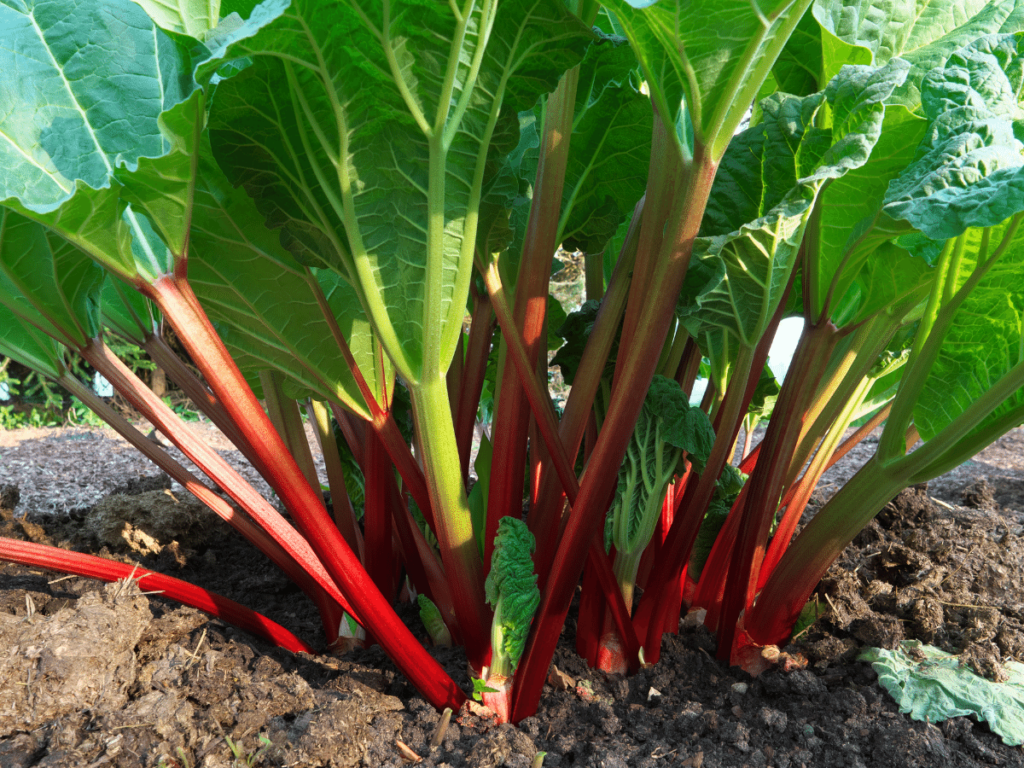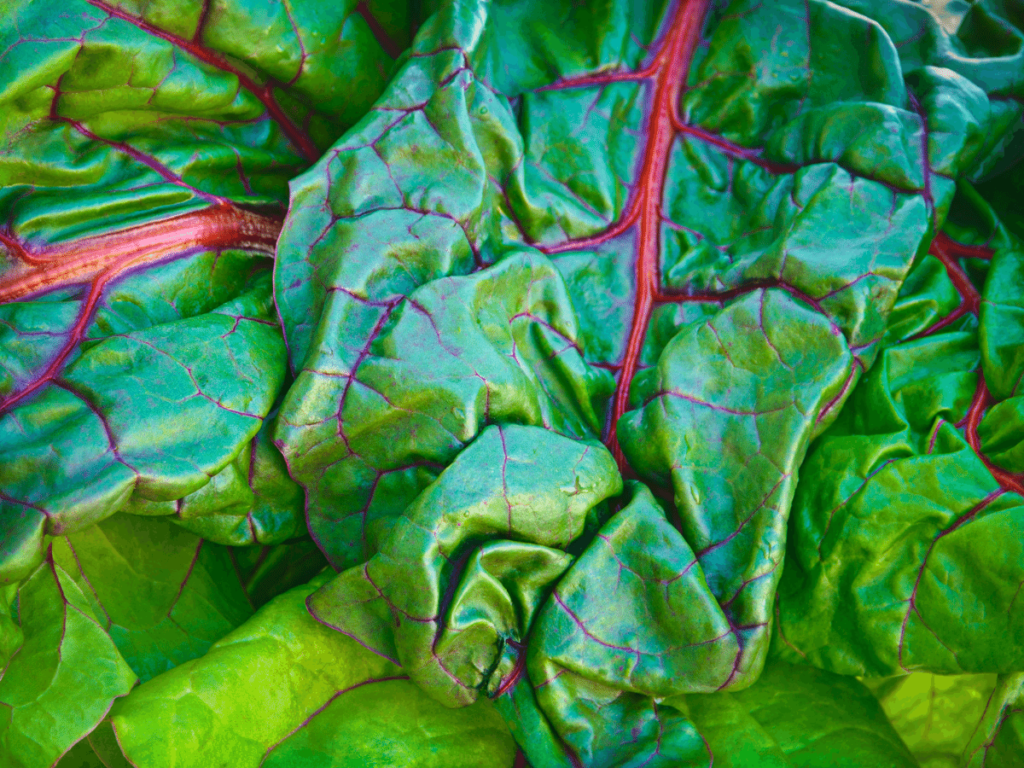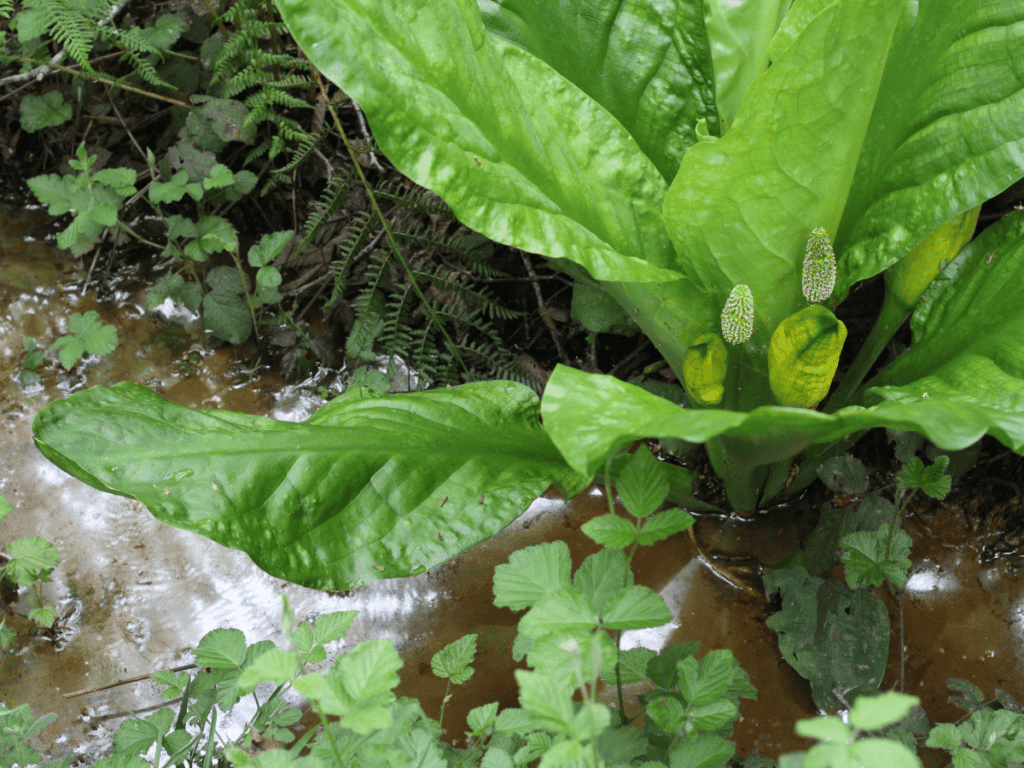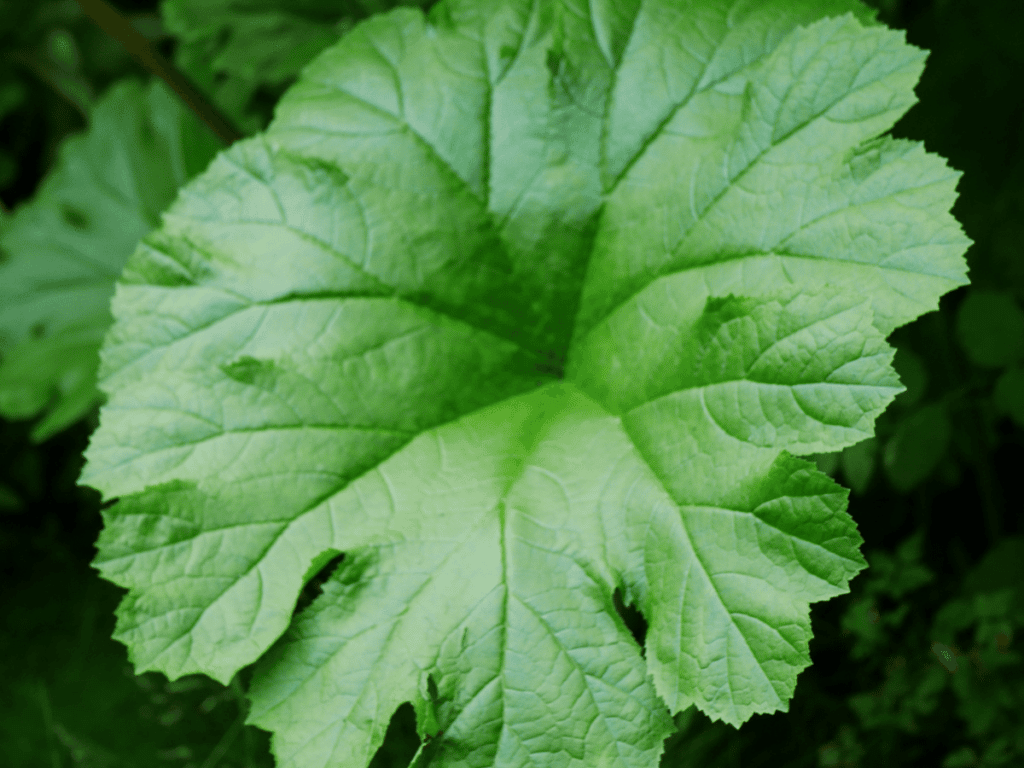
Rhubarb is a perennial plant that is typically grown in cooler climates. The light pink stalks of the rhubarb plant are edible, and the big triangular leaves are poisonous because of the high amount of oxalic acid present in them.
Rhubarb is commonly found in the gardens of North American and European regions. People often mistake Rhubarb with its other varieties that are strikingly similar in features. Consuming some of these varieties can be very harmful to your health.
Before discussing the weeds that look like Rhubarb, you might know that it is used to make pies, tarts and soups. It is famously known as the “Pie Plant”. Health Practitioners in China have been using it to treat several digestion-related problems.
Weeds That Look Like Rhubarb
Here is the List of 9 weeds that look like rhubarb :
1. Burdock weed (Arctium Asteraceae)

Burdock Weed is also known as “Wild Rhubarb” because it resembles Garden Rhubarb. The leaves of both the plants are enormous and triangular. At first glance, it would be difficult for someone to figure out the difference between the two plants.
Furthermore, the pale reddish stem of Burdock Weed is similar to Rhubarb. These two features make burdock weed almost identical to Rhubarb. Another exciting thing about burdock is that it comes from a different family known as Aster, and Rhubarb belongs to the Polygonaceae family.
Burdock weed is considered to be inedible. It can be dangerous for your health if you consume it by mistake, assuming it to be edible Rhubarb.
Therefore, it becomes essential to keep in mind the unique features of the burdock weed that are not identical to the Rhubarb plant. The most noticeable difference between these two is that the flowers on the top of the burdock weed are covered with prickly burrs. On the other hand, Rhubarb has pretty, soft and reddish flowers.
Furthermore, the upper side of the burdock weed’s leaves is hairy, and the lower side of the leaves appears to be woolly. Rhubarb plants have smooth leaves when compared to burdock. If you are prone to allergic reactions, it is advised not to touch the leaves of burdock weed.
Also, Burdock weeds can grow up to 6ft in height, whereas Rhubarb plants can reach up to 4ft. The leaves of the Burdock weed are also more significant than the Rhubarb plant.
If you encounter burdock weed in your garden, make sure to get rid of it completely. The reason to eliminate it is to stop it from spreading throughout your backyard.
2. Swiss chard (Beta Vulgaris)

Swiss Chard is a biennial plant that belongs to the Chenopodioideae family. Some varieties of Swiss Chard have the same red stalks as Rhubarb. Additionally, the large triangular leaves of both plants are also identical.
Now, the question arises of how we can distinguish between the two plants. First and foremost, Swiss Chard leaves are shinier than Rhubarb leaves. Moreover, the leaves are generally darker in colour than Rhubarb leaves.
Additionally, you can quickly notice that the reddish-coloured stalks spread out as veins in the leaves of Swiss Chard, whereas the pale white veins of Rhubarb leaves are less evident.
Another visible difference between the two plants is that the stork of the Rhubarb plant is connected by its topmost part spreading outwards, whereas the stork of Swiss Chard reaches the top of the leaf.
Unlike Rhubarb, the leaves of the Swiss Chard are edible. It is used in different recipes such as omelettes, soups and stir-fries.
Due to its nature of fighting for nutrients with other neighbouring plants, just like Rhubarb. It is classified as a weed as well.
3. Bog Rhubarb (Petasites Japonicus)

Bog Rhubarb, also known as fuki, belongs to the Asteraceae family. It is a perennial plant commonly found in Japan, Korea and China.
Its stalks are generally eaten with rice and miso soup. The leaves of Bog Rhubarb are high in pyrrolizidine alkaloids(PAs) which are known to cause liver damage.
The structure of Bog Rhubarb is quite similar to Rhubarb. When fully grown, they can overshadow the size of Rhubarb easily.
The pink and white flowers of Bog Rhubarb emerge before the appearance of its leaves. Its flowers are arranged in corymbs on top of a thick stalk that can reach up to 25 cm.
Its leaves are light green, kidney-shaped and fuzzy. The roots of Bog Rhubarb are rhizomes that aid in its fast growth.
Due to the vigorous rhizomes appearing at a depth of over one meter, it becomes an uphill task to get rid of Bog Rhubarb.
4. Poison hemlock (Conium Maculatum)

Poison Hemlock is a member of the Apiaceae family, which can grow up to 4 meters. It is a biennial plant which is mainly found in USDA 5 to 10 hardiness zones.
This invasive weed is known to be highly poisonous. Every part of this plant is entirely toxic.
The leaves and stalks of poison hemlock are pretty similar to that of Rhubarb. Although, an experienced person can distinguish between the plants by identifying the difference in the colour of the stalks of both plants.
The red stalks of Rhubarb are pretty different to the purple, long and hollow stalks of poison hemlock.
Make sure to wear appropriate protective gear before uprooting this noxious weed. Keep the children and pets away from it.
Also Read : Beware: Don’t Touch These 9 Dangerous Plants!
5. Brazilian Rhubarb (Gunnera Manicata)

Brazilian Rhubarb, commonly known as Giant Rhubarb, is a perennial plant with gigantic leaves.
It is native to South America but can be found in different parts of Europe and North America.
Gardeners often get confused due to its large umbrella-sized leaves, which are pretty similar to Garden Rhubarb.
Although Brazilian Giant Rhubarb can be easily identified by its tall, green stalks, the rusty red-coloured leaves of Brazilian Rhubarb are different from Garden Rhubarb.
Another difference between the two weeds is that Giant Rhubarb is entirely toxic.
6. Japanese Knotweed (Reynoutria Japonica)

Japanese Knotweed is an invasive weed that spreads like wildfire throughout your garden. It is native to Japan & Korea, where it is used to make jellies and sauce.
The stems of Japanese Knotweed look identical to Rhubarb. However, the leaves of both the weeds are pretty different in structure. The Rhubarb plant has huge triangle-shaped leaves at the end of reddish-coloured stalks. On the other hand, many spade-like structured leaves are attached along the stem of Japanese Knotweed.
Japanese Knotweed is known for its tartness, just like Rhubarb. It has been used as an edible herb to treat different ailments in its native Japan by folk healers.
7. Skunk Cabbage (Symplocarpus Foetidus)

The leaves of Skunk Cabbages are identical to the leaves of Giant Rhubarb. But, you may find Skunk Cabbage growing in the wild and boggy areas. Rhubarb prefers well-draining soil; hence it is difficult to find both the weeds in the same vicinity.
The Skunky smell of Skunk Cabbage is the total opposite of the fresh and juicy smell of Rhubarb.
The stems of Rhubarb are primarily red or green, unlike the colorless stem of Skunk Cabbage.
8. Pokeweed (Phytolacca Decandra)

Pokeweed, also known as pokeberry and American Pokeweed, is a perennial poisonous herb that is primarily found in the eastern regions of the United States.
Pokeweed and Rhubarb have similar coloured stems, but the growth pattern is quite different. Rhubarb has multiple stems coming out of a single rosette, whereas pokeweed has a central stem that produces black-coloured berries.
9. Indian Rhubarb (Darmera Peltata)

Indian Rhubarb or Umbrella Plant is a perennial herb that is commonly found in the western parts of the U.S.
The tall reddish stems of Indian Rhubarb are pretty similar to that of Rhubarb. It has big, glossy, Umbrella shaped leaves and purple-coloured flowers at the top.
It grows well near ponds and boggy areas.
In conclusion, it is essential to identify weeds that look like Rhubarb. This is because they can be easily confused and cause problems in the garden. If you think you see a weed that looks like Rhubarb, take a closer look and make sure before taking any action.





[…] consumption. Eating it raw can cause some issues due to the presence of calcium oxalate compound. Rhubarb leaves also have the same compound that makes their leaves inedible.Boiling them can help eliminate […]
[…] Recommended – 9 Weeds That Look Like Rhubarb (and how to tell them apart) […]
[…] One of the significant rhubarb-growing problems faced by gardeners is perennial weeds. […]